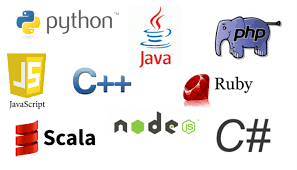
The Top Programming Language Choices for Children
Why Teach Kids to Code?
Before delving into specific programming languages, it’s essential to understand why teaching kids to code has become a fundamental aspect of education. Coding not only enhances logical thinking and problem-solving skills but also fosters creativity and innovation. In a world dominated by technology, coding literacy is a valuable asset, providing children with the tools to navigate and contribute to the digital landscape effectively.
1. Scratch: Unleashing Creativity Through Visual Programming
Scratch, developed by the MIT Media Lab, is a visual programming language designed for beginners, particularly kids. Its intuitive drag-and-drop interface allows children to create interactive stories, games, and animations without the complexities of syntax. Scratch nurtures creativity and problem-solving skills, making it an ideal starting point for young learners.
2. Python: Versatility and Readability
Python stands out as one of the most versatile and readable programming languages, making it an excellent choice for children. Its syntax is clear and straightforward, allowing kids to focus on understanding the logic behind coding. Python’s applicability extends from simple projects to more complex endeavors, providing a seamless learning curve for kids as they progress in their coding skills.
3. Blockly: Bridging Visual and Text-Based Coding
Blockly, a visual programming language developed by Google, serves as a bridge between visual and text-based coding. Like Scratch, Blockly uses a visual interface where users drag and connect blocks to create code. This approach eases the transition to text-based coding, making Blockly a suitable choice for children who are ready to explore the next level of programming complexity.
4. JavaScript: Creating Interactive Web Experiences
For kids interested in web development, JavaScript offers a rewarding entry point. As a client-side scripting language, JavaScript enables children to add interactive elements to websites, providing a tangible way to see the impact of their code in real time. This hands-on experience makes JavaScript an engaging choice for young learners with an interest in creating dynamic web content.
5. Swift (for iOS Development): Crafting Mobile Apps with Apple’s Language
Swift, developed by Apple, is an excellent programming language for children interested in iOS app development. Combining ease of use with powerful capabilities, Swift empowers young learners to craft their mobile applications. The Swift Playgrounds app provides an interactive and immersive learning experience, guiding kids through the process of creating their own iOS apps. This hands-on approach not only introduces them to the world of mobile development but also instills a sense of accomplishment as they see their creations come to life on Apple devices.
Best Practices for Introducing Kids to Coding
As parents and educators embark on the journey of introducing kids to coding, adopting best practices can enhance the learning experience. Here are some tips for making the process enjoyable and effective:
Start with Interactive Platforms:
Utilize online platforms like Code.org, Khan Academy, and Tynker that offer interactive lessons and projects designed specifically for kids. These platforms provide a supportive environment for learning and experimenting with code.
Incorporate Gamification:
Introduce coding through games and challenges to make the learning process fun and engaging. Gamification not only captures a child’s interest but also reinforces playfully coding concepts.
Encourage Creativity:
Coding is not just about following instructions; it’s a creative process. Encourage children to explore their imagination and express their ideas through coding projects. This fosters a sense of ownership and pride in their creations.
Provide Real-World Examples:
Relate coding concepts to real-world examples to make them more relatable for kids. Show them how coding is used in creating their favorite video games, websites, and mobile apps. Connecting coding to tangible outcomes enhances motivation and understanding.
The Importance of Coding in Education
Coding goes beyond just acquiring a technical skill; it teaches children valuable life skills. Through coding, children develop critical thinking, problem-solving, and logical reasoning abilities. These skills are transferable to various aspects of life and contribute to academic success and future career opportunities. In a rapidly evolving job market, where technology plays a central role, coding proficiency opens doors to a wide array of professions. By introducing coding early, we equip children with a solid foundation for success in the digital age, preparing them to be active contributors to an increasingly technology-driven society.
Overcoming Gender Stereotypes in Coding Education
Addressing gender stereotypes in coding education is crucial for fostering diversity and inclusion. Historically, coding has been perceived as a male-dominated field, leading to a gender gap in technology-related careers. Introducing coding to girls from an early age and promoting female role models in the industry helps break down these stereotypes. Creating a supportive and inclusive environment encourages all children, regardless of gender, to explore and excel in coding, contributing to a more diverse and innovative future workforce.
Coding as a Language: Fostering Multilingualism in Education
Just as learning multiple spoken languages enhances cognitive abilities, coding can be seen as a language of its own. Teaching children to code alongside traditional language education broadens their communication skills. Coding languages share similarities with spoken languages in terms of syntax and structure, making it a complementary form of literacy. This multidimensional approach to education prepares children to navigate a world where proficiency in both spoken and programming languages is increasingly valuable.
The Role of Coding in Shaping Future Industries
Coding is not only a skill for the present; it is a key driver of future innovation and industry development. Industries such as artificial intelligence, robotics, and augmented reality rely heavily on coding expertise. By introducing children to coding, we are not only preparing them for current technological demands but also laying the groundwork for their potential contributions to groundbreaking advancements in the future. Understanding the role of coding in shaping industries provides children with a sense of purpose and connection to the broader impact of their coding skills.
Conclusion: Nurturing the Future of Coding
As we navigate the digital age, equipping children with coding skills becomes an investment in their future. The top programming language choices for kids, such as Scratch, Python, Blockly, JavaScript, and Swift, cater to various interests and learning styles. Whether children aspire to create interactive stories, build websites, or develop mobile apps, these languages offer a diverse range of possibilities. By understanding the unique features and benefits of each programming language, parents and educators can tailor the learning experience to suit the individual needs and interests of the child. The world of coding awaits young minds, offering a pathway to creativity, problem-solving, and innovation. As we empower the next generation with coding literacy, we pave the way for a future where technology is not just a tool but a medium through which young innovators can shape the world.



